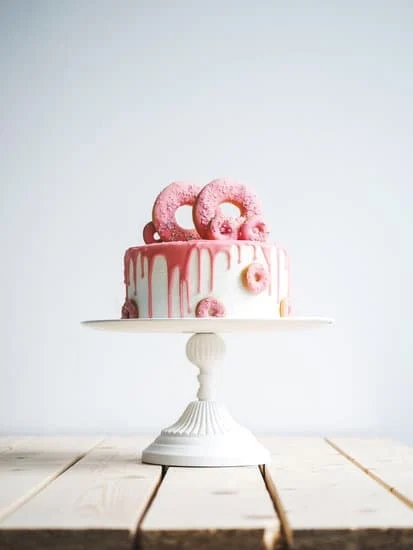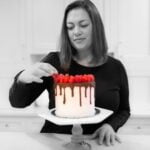Fondant decorations for cakes have become a popular choice for those looking to add a touch of elegance and creativity to their baked creations. Fondant is a versatile sugar paste that can be molded into various shapes, making it ideal for creating intricate designs on cakes. In this article, we will explore what fondant is and why it is favored by many professional and amateur bakers alike.
Fondant is a smooth, pliable icing made from sugar, water, gelatin, and glycerin. It provides a sleek finish to cakes and allows for stunning decorations that are almost too beautiful to eat. One of the main advantages of fondant is its ability to hold its shape well, making it perfect for creating 3D designs and intricate patterns on cakes. Whether you’re looking to create delicate flowers or bold geometric shapes, fondant offers endless possibilities for cake decoration.
Not only does fondant serve as a decorative element, but it also helps preserve the freshness of the cake underneath by forming a protective layer. Additionally, fondant provides a clean canvas for painting or adding edible glitter and other embellishments.
Its versatility and professional look make it a favorite among bakers for special occasions like weddings, birthdays, and celebrations. Stay tuned as we delve deeper into the world of fondant decorations and discover how you can elevate your cake decorating skills with this magical ingredient.
Types of Fondant
Fondant is a versatile and popular choice for decorating cakes due to its smooth finish and ability to create intricate designs. When it comes to fondant, there are two main types that are commonly used in cake decorating: rolled fondant and poured fondant.
Rolled fondant is the most common type of fondant used for cake decorations. It is made from sugar, corn syrup, and gelatin and has a dough-like consistency that can be rolled out into thin sheets. Rolled fondant is perfect for covering entire cakes or creating detailed decorations such as flowers, figures, and patterns.
On the other hand, poured fondant has a smoother and shinier finish compared to rolled fondant. Poured fondant is made from sugar, water, and corn syrup and has a liquid-like consistency that can be poured over cakes or used for dipping petit fours. This type of fondant is ideal for achieving a glossy finish on cakes or creating simple decorations that require a shiny look.
When working with either rolled or poured fondants, there are certain tools and equipment that are essential to have on hand. Here are some key items you’ll need:
- Rolling pin: For rolling out rolled fondant to the desired thickness
- Fondant smoother: To help smooth out any wrinkles or air bubbles when applying fondant to cakes
- Fondant molds: For creating intricate shapes and designs with fondant
- Edible food coloring: To color your fondant in various shades for decorations
- Piping bags and tips: For piping royal icing or melted chocolate onto fondant decorations
Whether you choose rolled or poured fondant for your cake decorating needs, both types offer endless possibilities for creating stunning cakes. Experiment with different techniques such as molding, cut-out designs, painting with edible colors, embossing patterns, or even adding edible glitter to elevate your creations further. Let your creativity shine through as you explore the world of fondant decorations for cakes.
Tools and Equipment Needed for Fondant Decorations
Working with fondant decorations requires specific tools and equipment to ensure the best results. Having the right supplies can make a significant difference in the outcome of your cake decorating endeavors.
Rolling Pin
A good quality rolling pin is essential for working with fondant. A non-stick, smooth surface will make rolling out fondant easier and prevent it from sticking. Some bakers prefer using a large wooden rolling pin specifically meant for fondant work.
Fondant Smoother
A fondant smoother is a must-have tool for achieving a professional finish on your cakes. It helps smooth out any wrinkles or air bubbles that may appear when applying fondant to a cake and ensures a clean, polished look.
Fondant Cutters
Fondant cutters come in various shapes and sizes, allowing you to create intricate designs and patterns on your cakes. They are perfect for cutting out shapes, letters, flowers, or any other decorations you desire for your cake.
Modeling Tools
Modeling tools are useful for creating details and textures on fondant decorations. They can help you sculpt figures, flowers, or any other intricate designs you want to add to your cake.
Having these essential tools and equipment will set you up for success when working with fondant decorations for cakes. Invest in high-quality supplies to make your cake decorating process more manageable and enjoyable while achieving professional-looking results every time.
Step-by-Step Guide to Making Fondant Decorations
Fondant decorations for cakes are a popular choice among bakers and cake decorators due to their versatility and ability to create intricate designs. Making fondant decorations from scratch may seem intimidating at first, but with the right techniques and tools, you can create stunning edible works of art to adorn your cakes.
To begin making fondant decorations, you will need a few key ingredients: gelatin, water, glucose syrup, glycerin, powdered sugar, and flavoring. These ingredients are mixed together to form a pliable dough-like consistency that can be rolled out and molded into various shapes. You can also purchase pre-made fondant in different colors if you prefer not to make it from scratch.
Once you have your fondant ready, the next step is to decide on the design of your decorations. Whether you’re creating flowers, ribbons, figurines, or other intricate designs, having the right tools is essential.
Some essential tools for working with fondant include rolling pins, cutting tools (such as various sized cookie cutters or shaped molds), shaping tools (like ball tools or veining tools), and a non-stick surface to work on. By following a step-by-step guide and utilizing these tools effectively, you can bring your creative vision to life with fondant decorations for cakes.
Tips and Tricks for Working With Fondant
Working with fondant decorations for cakes can be both rewarding and challenging. To ensure a successful outcome, here are some essential tips and tricks to help you navigate the process smoothly.
First and foremost, when working with fondant, it is crucial to knead it properly before use. Kneading helps to soften the fondant, making it more pliable and easier to work with. It also helps to eliminate any air bubbles that may cause the fondant decorations to crack or tear. If you find that your fondant is too dry, you can add a small amount of vegetable shortening or glycerin to soften it.
Another important tip is to roll out your fondant decorations on a surface dusted with cornstarch or powdered sugar. This helps prevent sticking and ensures a smooth finish on your cake decorations. Additionally, using a non-stick rolling pin will make rolling out the fondant easier and prevent any unsightly marks on the surface.
When attaching fondant decorations to your cake, consider using edible glue or water as adhesive. These options provide a secure bond without leaving behind any visible residue. Be sure to apply the adhesive sparingly and evenly for best results. If you need to make adjustments or smooth out any imperfections in your fondant decorations, using a small brush dipped in water can help blend seams seamlessly.
By following these tips and tricks for working with fondant, you’ll be able to create professional-looking cake decorations that are sure to impress at any event or celebration. Remember that practice makes perfect, so don’t be discouraged if your first attempt isn’t flawless – keep experimenting and refining your skills until you achieve the desired result.
Popular Fondant Decoration Techniques
Fondant decorations for cakes offer a wide range of creative possibilities when it comes to cake decorating. Popular fondant decoration techniques include molded decorations, cut-out designs, and even painting on fondant-covered cakes. These techniques allow for intricate and detailed designs that can truly elevate the presentation of any cake, whether it be for a wedding, birthday, or special occasion.
Molded fondant decorations involve shaping the fondant into various forms using molds or by hand. This technique allows for three-dimensional elements such as flowers, animals, or other objects to be added to the cake’s design.
Cut-out designs, on the other hand, involve using special fondant cutters to create shapes and patterns that can be layered on top of the cake or used as borders. Painting on fondant is another popular technique where edible food coloring is used to add detail and color to the fondant surface.
When creating fondant decorations for cakes, it is important to have the right tools and equipment on hand. Fondant rolling pins, spatulas, shaping tools, and edible dusts are just a few examples of items that can aid in the process. Taking the time to learn and practice these various techniques can open up a world of exciting possibilities for bringing creativity and artistry to your cake decorating projects.
| Fondant Decoration Techniques | Description |
|---|---|
| Molded Decorations | Shapes formed by molding fondants into various forms using molds or by hand. |
| Cut-Out Designs | Creating shapes and patterns with special fondant cutters. |
| Painting on Fondant | Using edible food coloring to add detail and color to the fondant surface. |
Inspiration for Fondant Cake Designs
When it comes to creating stunning cake designs, fondant decorations offer endless possibilities for creativity and personalization. Whether you are looking to add a touch of elegance to a wedding cake, celebrate a milestone with a birthday cake, or commemorate a special occasion, fondant decorations can help bring your vision to life. Below are some inspirational ideas to spark your imagination when it comes to decorating cakes with fondant:
- Wedding Cakes:
- Birthday Cakes:
- Special Occasions:
For weddings, fondant decorations can elevate the look of the cake and tie in with the theme of the event. Consider incorporating delicate sugar flowers, intricate lace patterns, or personalized monograms made out of fondant for a romantic and sophisticated touch.
Celebrate birthdays in style by using fondant decorations to create themed cakes that reflect the interests or hobbies of the birthday celebrant. From playful cartoon characters to sports-themed designs, fondant offers endless possibilities for customization.
Whether it’s a baby shower, graduation party, or anniversary celebration, fondant decorations can add a special touch to any occasion. Create whimsical designs like balloons, bows, or edible figures to make your cake stand out and leave a lasting impression on your guests.
With fondant decorations for cakes, the only limit is your imagination. Experiment with different techniques such as molding, cut-outs, painting, and more to create unique and eye-catching designs that will make your cakes truly unforgettable. Let your creativity run wild and transform simple cakes into works of art that will delight both the eyes and taste buds of everyone who sees them.
Troubleshooting Common Issues When Using Fondant for Cake Decorations
When working with fondant decorations for cakes, it is common to encounter some issues that may affect the overall look and finish of your cake. Understanding how to troubleshoot these problems can help you create flawless and professional-looking designs:
Cracking or Tearing
One of the most common issues when using fondant is cracking or tearing. This can happen for a variety of reasons, such as not kneading the fondant enough before rolling it out, rolling it too thin, or not allowing the fondant to rest before applying it to the cake.
To prevent cracking or tearing, make sure to knead your fondant until smooth and pliable, roll it out evenly and at the right thickness, and allow it to rest for a few minutes before covering your cake.
Sticky Fondant
Another issue that you may encounter is sticky fondant. Sticky fondant can be caused by humidity in the air, warm hands when working with the fondant, or adding too much water or liquid food coloring while kneading. To combat sticky fondant, try dusting your work surface and rolling pin with cornstarch or powdered sugar, washing then drying your hands frequently while working with the fondant, and using gel food colors instead of liquid ones.
Air Bubbles
Air bubbles are another common problem that can occur when using fondant decorations for cakes. These pesky bubbles can form between the cake and the fondant during application, causing unsightly bumps on your finished design.
To avoid air bubbles, gently smooth out the fondant starting from the center and moving outward, use a sharp pin to release any trapped air if necessary, or try lightly tapping the surface of the fondant with a smoother tool to eliminate any bubbles lurking beneath. With these troubleshooting tips in mind, you can overcome common challenges when working with fondant and create stunning cakes that are sure to impress.
Conclusion
In conclusion, fondant decorations offer a versatile and creative way to elevate your cake decorating skills. Whether you are a beginner or an experienced baker, working with fondant can add a professional touch to your cakes that will impress any recipient. By understanding the various types of fondant, the necessary tools and equipment, and following step-by-step guides, you can master the art of fondant decorations.
One of the key advantages of using fondant for cake decorations is the ability to create intricate designs and details that may be challenging with other mediums. Techniques such as molding, cut-outs, painting, and more allow you to unleash your creativity and personalize your cakes for any occasion. Whether it’s a wedding cake, birthday cake, or special celebration, fondant decorations can truly bring your vision to life.
While working with fondant may present some challenges, such as cracking or sticking, by following tips and tricks for handling this medium effectively, you can troubleshoot common issues with ease. With practice and patience, you can perfect your fondant decoration skills and impress your friends and family with stunning cakes that not only taste great but look professionally decorated. Embrace the art of fondant decorations and take your cake decorating to the next level.
Frequently Asked Questions
How to Make Fondant to Decorate a Cake?
Making fondant to decorate a cake involves a few simple steps. First, melt marshmallows and add powdered sugar until you achieve a dough-like consistency. Knead the fondant until smooth, then roll it out and use it to cover or create decorations for your cake.
How Far in Advance Can You Make Fondant Decorations for a Cake?
Fondant decorations can be made in advance to save time on the day of decorating. Generally, you can make fondant decorations up to a month before you plan on using them. Store them in an airtight container at room temperature or in the refrigerator to keep them fresh.
How Do You Get Fondant Decorations to Stick to a Cake?
To get fondant decorations to stick to a cake, you can use water as glue by lightly brushing the back of the decoration with water before placing it on the cake. Another option is edible glue made from tylose powder mixed with water or a small amount of clear extract like lemon or almond.
Use these methods to securely attach fondant decorations to your cake for a polished finish.

Welcome to our cake decorating blog! My name is Destiny Flores, and I am the proud owner of a cake decorating business named Cake Karma. Our mission is to provide delicious, beautiful cakes for all occasions. We specialize in creating custom cakes that are tailored specifically to each customer’s individual needs and tastes.





